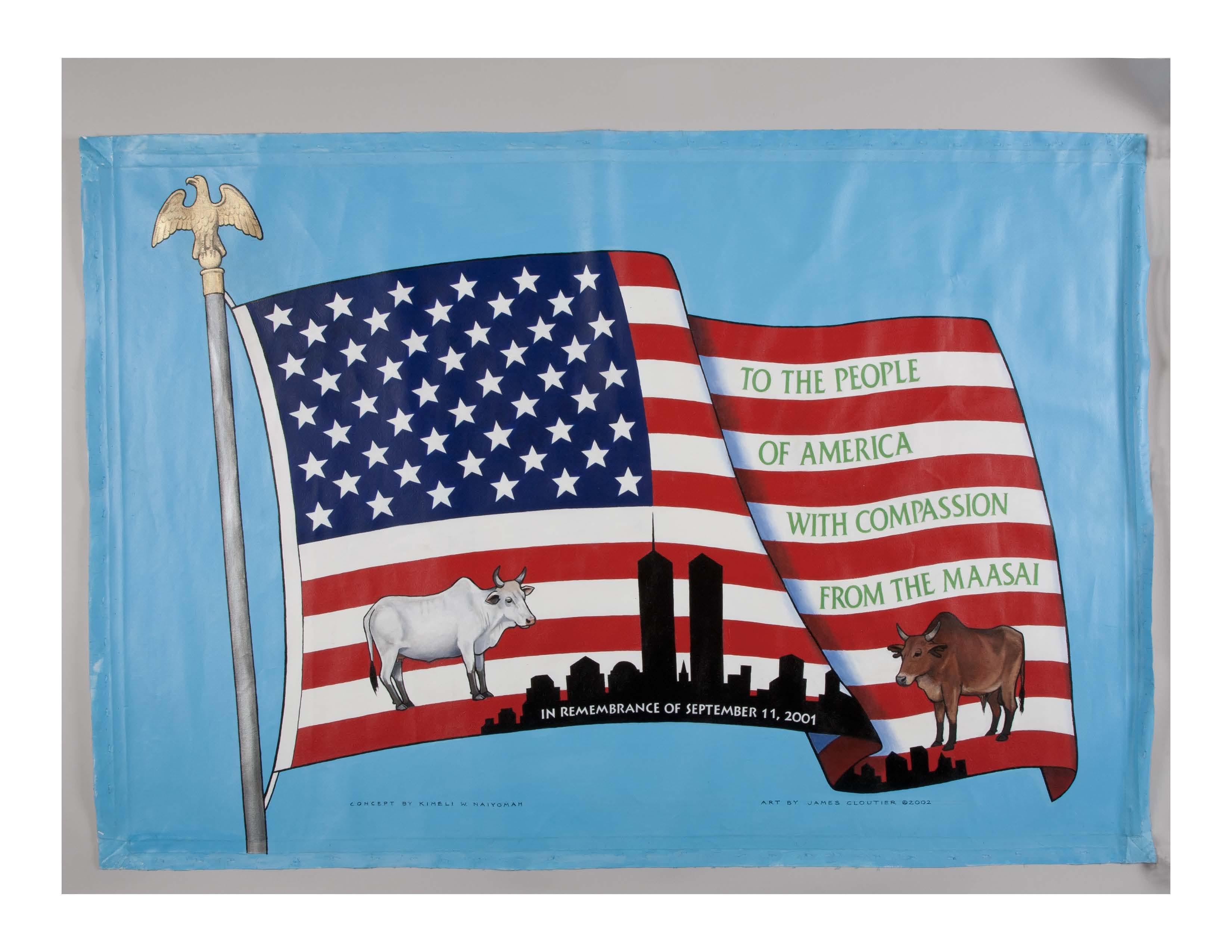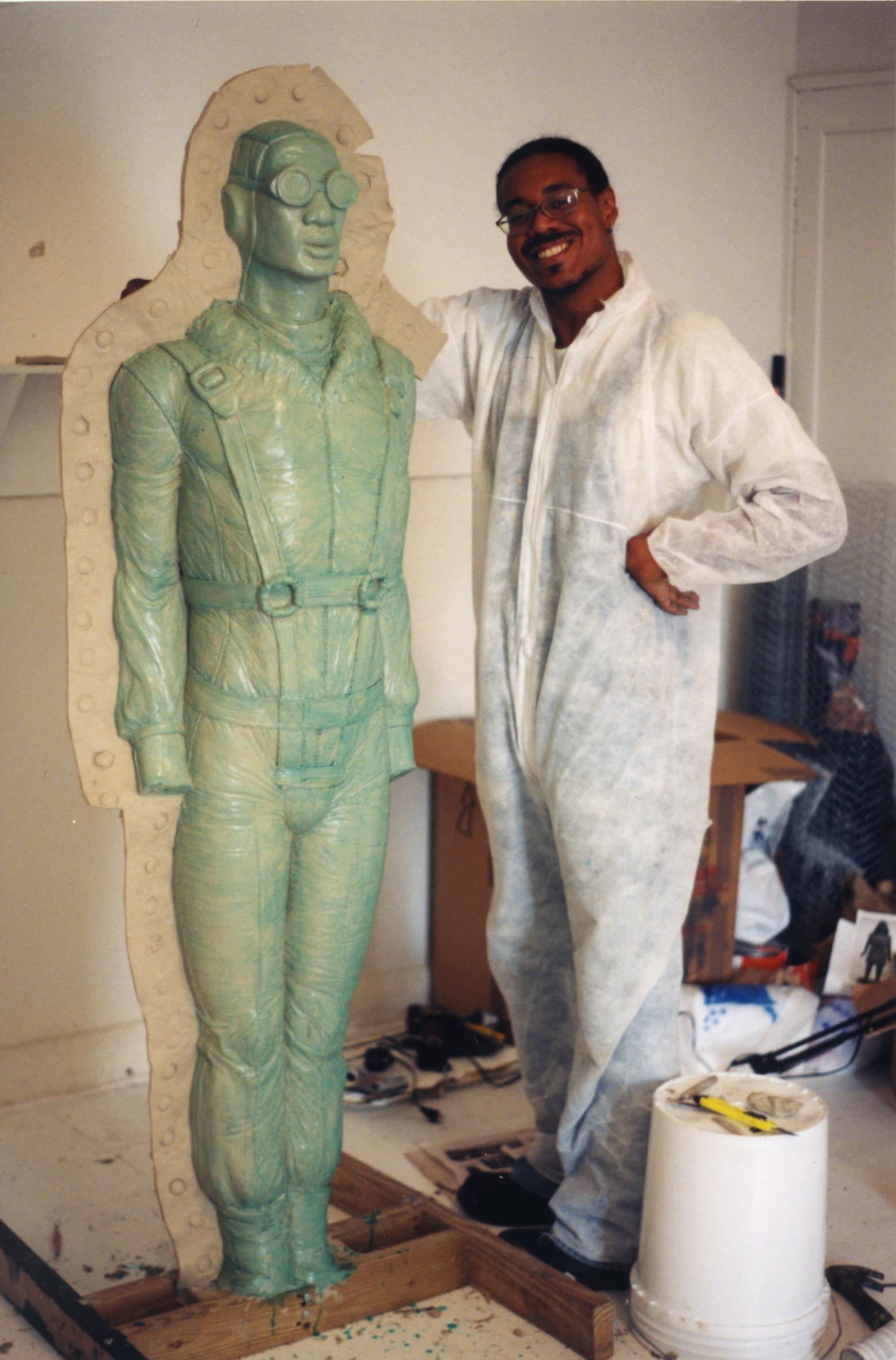Make a donation to the museum
A Maasai Village Responds to 9/11 With Compassion
A Maasai Village Responds to 9/11 With Compassion
- Friday, August 6, 2021

While the 9/11 attacks were carried out within the boundaries of the United States, the impact of the event touched every corner of the world. Victims represent over 90 nations, and the attacks are estimated to have been witnessed in real time by one third of the world’s population via television and radio.
But for some remote communities, news of the attacks travelled slowly, often carried by witnesses. The true account of one such witness, a young man named Wilson Kimeli Naiyomah (quote at left), forms the basis of the children’s book 14 Cows for America, by Carmen Agra Deedy. In 2001, Kimeli, a Maasai student from a remote village in Kenya, was attending university in California. He witnessed the attacks on the World Trade Center while visiting New York. When he returned home to his village months later, he was the first to share the story with his community. Deeply moved by Kimeli’s account of the attacks, an elder posed a simple question: “What can we do for these poor people?”
In response, Kimeli decided to offer the United States an extremely personal gift borne from deep compassion: a cow. In Maasai culture, cows are sacred symbols; as Kimeli explains, “To the Maasai, the cow is life.” Inspired by Kimeli’s generosity, the other members of his tribe came together to offer a total of 14 cows to the people of America, gifting them to a visiting ambassador in a special ceremony.

Options for moving the cows to America were explored, but it was ultimately decided that keeping the herd in Kenya would be the safest way to care for it. The herd continues to grow and prosper to this day. As a physical symbol of the gift, Kimeli worked with a friend, the artist James Cloutier, to create two commemorative paintings. One currently hangs in the 9/11 Memorial & Museum and one remains in Kenya.
14 Cows for America not only offers readers a window into Kimeli’s story and his culture, but it also deals with the events of 9/11 in a sensitive and child-friendly way that is appropriate for elementary audiences. Perhaps the most powerful aspect of the book is its focus on one community's response — with compassion and generosity that stretched thousands of miles beyond its own borders.
The book is available at the online 9/11 Memorial & Museum store.
This post is the second installment of a series highlighting books that tell the story of 9/11 to children. Read the first installment here.
By Jennifer Lagasse, Assistant Director of Education Programs
Previous Post
Remembering Artist Michael Richards on His Birthday

We pay tribute to artist Michael Richards on what would have been his 58th birthday. Richards, who was killed on 9/11 while working in the Lower Manhattan Cultural Council’s World View studio on the North Tower’s 92nd floor, is now the subject of a major retrospective at the North Miami Museum of Contemporary Art.
Next Post
On This Day: Philippe Petit's Iconic High-Wire Feat

We're remembering high-wire artist Philippe Petit's death-defying walk between the Twin Towers, 47 years ago today. Petit spent 45 minutes in the air as thousands watched from 1,350 feet below, witnessing "the artistic crime of the century."